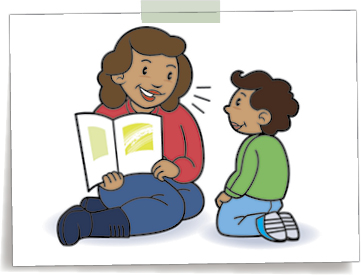

Hearing is a critical part of a child's communication development. Even a mild or fluctuating hearing loss can affect a child's communication development so it's important to identify any loss as early as possible.
There are 2 main types of hearing loss:
Temporary hearing loss can mean that the child is able to hear well one day but not the next. This is sometimes referred to as fluctuating hearing loss, which can be difficult to identify. People may talk about the child having 'middle ear' problems, fluid in their ear or sometimes glue ear.
See the KidsHealth page on ear infections for more information [1]
See the KidsHealth page on glue ear for more information [2]
Permanent hearing loss may be in one or both ears and can be different in each ear.
Any type or degree of hearing loss can make learning to talk more difficult.
Signs of hearing difficulties include:
If you have any concerns about your child's hearing, you should talk to your child's doctor who may refer them for a hearing test.
All babies in Aotearoa, New Zealand, have a hearing test soon after they are born.
Tamariki (children) will be offered a hearing check on several occasions before they start school, by nurses employed to do Well Child checks. When tamariki turn 4, they will be offered a hearing test as part of their B4 School Check. If there are concerns, they will be referred to an audiologist, a specialist in hearing loss, for further hearing testing.
Audiologists mainly work in hospitals and community-based clinics. They make the experience as easy as possible for tamariki and are skilled in testing young children's hearing from birth.
It may be necessary for tamariki to get their hearing tested a few times, as it can be difficult to pick up a hearing loss with the first test.
See the KidsHealth section on hearing, vision and newborn screening for more information [3]
The following are general strategies for all children with hearing loss but mainly focus on those using spoken language.
Gain your child's attention before speaking to them; for example, say their name before speaking.
Try to keep background noise down when talking to them; for example, turn the TV volume down.
When speaking, use a clear, everyday voice. Try not to speak too loudly as this distorts the sound.
Check that your child understands any instructions by asking a question that doesn’t require a yes or no response. You could ask "What will you do now?" rather than "Did you hear me?" or "Do you understand?".
Make sure your child can see your face when you are talking to them so that they can hear your voice more clearly and see your facial expressions. Try not to exaggerate your facial expressions or lip patterns.
Be aware of anything that can make it difficult for them to see your face, such as lighting or shadows, hands and books.
At the early childhood education centre, encourage the child to sit close to the person speaking; for example, if the teacher is reading a story, then the child should be seated close to them.

Depending on the degree of hearing loss your child has, there may be a range of supports available, including access to New Zealand Sign Language (NZSL) for those with permanent hearing loss.
If you would like to look at anything in more detail, this list of references [4] might be a good starting point.
The content on this page has been produced in collaboration with the Ministry of Education and adapted from Much more than words | Manuka takoto, kawea ake (2014) (PDF, 565KB) [5].
This page last reviewed 08 December 2023.
Email us [7] your feedback
Links
[1] https://kidshealth.org.nz/ear-infections?language=ton
[2] https://kidshealth.org.nz/glue-ear?language=ton
[3] https://kidshealth.org.nz/tags/hearing-vision-and-newborn-screening?language=ton
[4] https://kidshealth.org.nz/communication-development-references?language=ton
[5] https://seonline.tki.org.nz/Educator-tools/Much-More-than-Words
[6] https://kidshealth.org.nz/node/1584?language=zh-hans
[7] https://kidshealth.org.nz/contact?from=http%3A%2F%2Fkidshealth.org.nz%2Fprint%2F1892%3Flanguage%3Dzh-hans